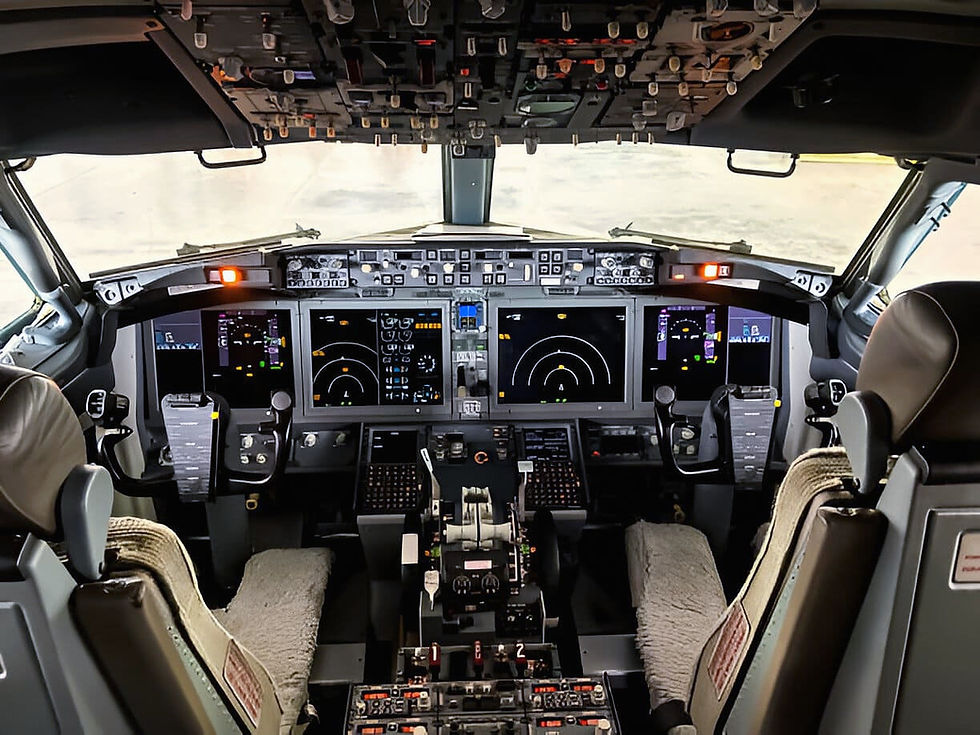What Makes a Simulator Yoke Feel Real?
- AGRONN Simulation Technologies

- Jul 21
- 2 min read

A yoke is one of the most hands-on parts of a flight simulator. It is used during every phase of flight and shapes how each control input feels.
But realism doesn't come from appearance alone. What makes a simulator yoke feel believable is often a combination of subtle physical details that work together.
Balance in Movement
The feel of a simulator yoke plays a key role in defining how flight responds in your hands. Realistic yoke behavior often starts with how it moves. The amount of resistance, the way it turns or pitches, and how it returns to center all influence the overall impression. If the movement feels too light, it may seem disconnected. If it’s too stiff, it can feel unnatural or forced. A balanced level of control allows for smooth input without requiring constant correction.
Return-to-center behavior also plays a role. Springs, dampers, or other mechanical systems help the yoke return with a consistent rhythm. This predictability allows the pilot to focus more on the flying and less on managing the hardware.
Feel Comes First
What makes a simulator yoke convincing is not just consistency, but the way it mirrors the feel of real-world controls. This includes the balance of resistance, the smoothness of travel, and the physical response to input. A yoke that moves in a way that feels natural creates a stronger connection between the user and the aircraft, even within a virtual environment.
Small imperfections or variations may exist, but if the overall feel is right, the experience remains believable. It’s not about perfection, but familiarity.
The Importance of Construction
Materials used in a yoke influence both feel and stability. Solid construction, especially around the internal support and shaft areas, helps reduce unwanted flex or shifting. A stable yoke moves smoothly without introducing extra motion or vibration.
Even if the material itself is not visible during use, it plays a role in how grounded the entire setup feels. Tactile details also matter. A grip that holds firm, a shaft that tracks straight, and components that stay aligned all contribute to an experience that feels more complete.
Where Realism Takes Hold
There is no single feature that makes a simulator yoke feel real. It is the combination of many small factors. Balanced movement, consistent resistance, and a solid construction all work together to make the experience feel familiar and controlled.
When those elements are well-aligned, the hardware becomes less noticeable. It becomes a tool that supports the simulation without drawing attention to itself. That is often the moment when realism quietly takes hold.



